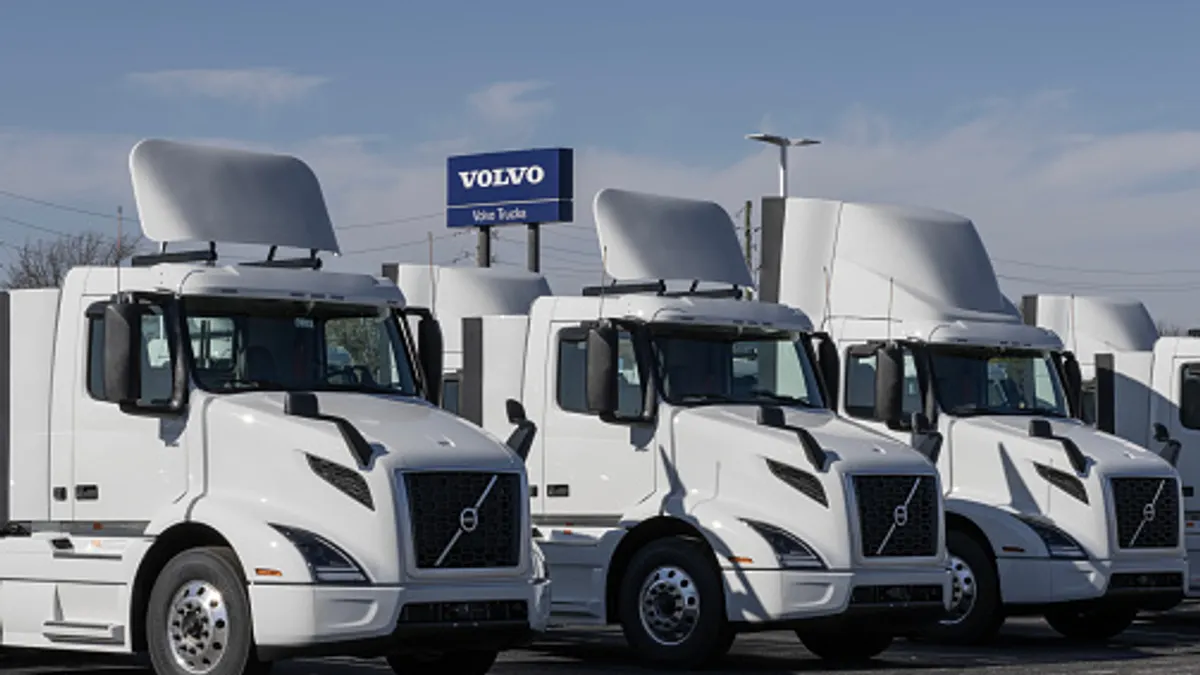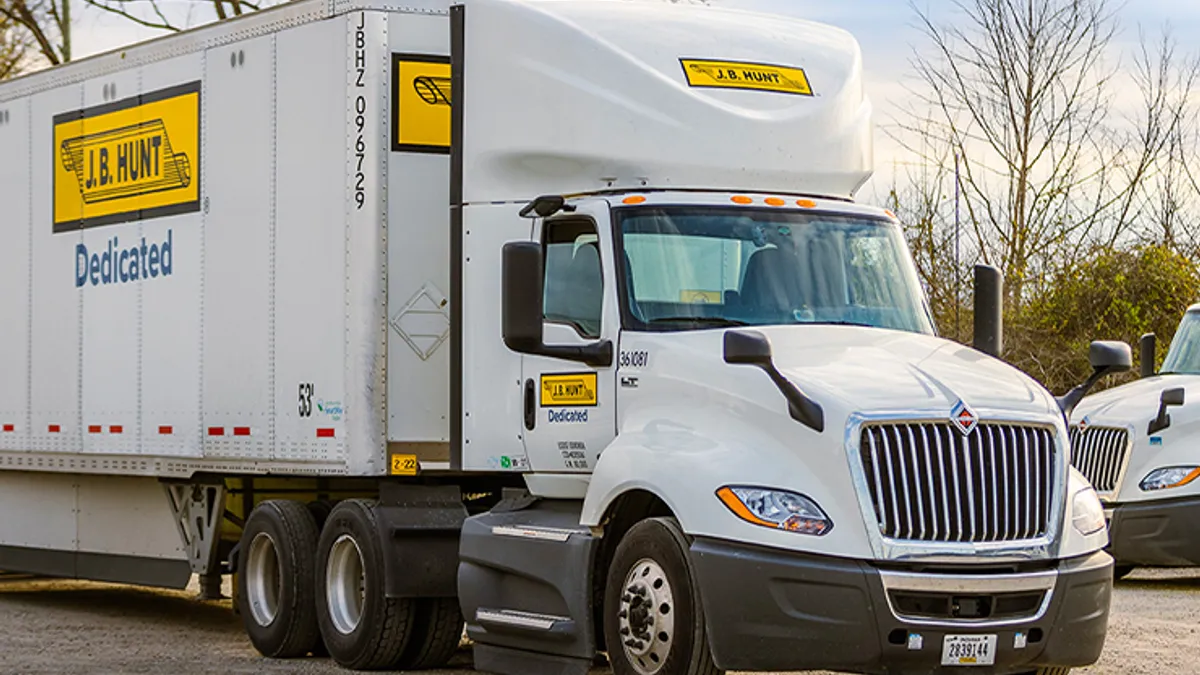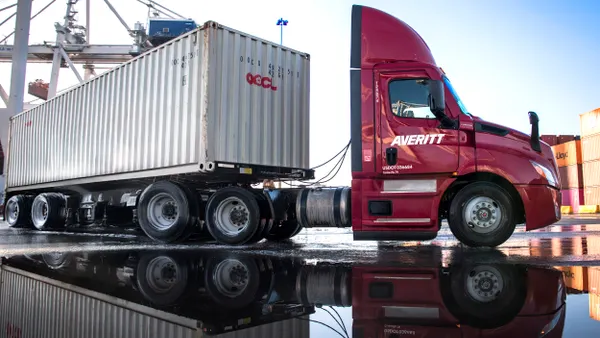Los Angeles is notorious for having the worst air quality in the country, and environmental officials have identified the heavy-duty trucking industry as one of the primary culprits.
Currently, more than 80% of emissions of Nitrogen Oxides (NOx) come from mobile sources. Heavy-duty trucks contribute the bulk of those NOx emissions, but there are other sources of NOx associated with warehouses, such as cargo handling equipment. It is estimated that in 2023 (the date by which California needs to meet the ozone standard), NOx emissions associated with warehouses will be about 37 tons per day — that is just under 15% of total NOx emissions in the Los Angeles district.
In a move to combat transportation emissions, the South Coast Air Quality Management District (SCAQMD) voted last May to devise rules aimed at regulating warehouses, distribution centers, rail yards, marine ports and airports because of the mobile air emissions coming from those sites.
SCAQMD believes it can drastically reduce California’s total emissions by creating incentives for sources of these emissions — trucking companies and the warehouse managers that contract them — to prioritize cleaner technology. Sarah Rees, an assistant deputy, executive officer in planning for SCAQMD, told Supply Chain Dive the agency is working closely with industry stakeholders to find solutions that can help meet regulatory goals.
Warehouses are on the hook
"California has the worst ozone pollution in the country and we don’t currently meet federal standards for ozone," said Rees. "As a result, we are being driven, at a large scale, to take dramatic steps to meet federal air quality standards and our focus is on heavy-duty trucking."
She said the District is facing a 2023 deadline to show the federal government that the 1997 eight-hour ozone standard — 80 parts per billion (ppb) — have been attained. Models indicate that to satisfy those standards, the Los Angeles region must reduce NOx emissions by an additional 45%. By 2031, the 2008 eight-hour ozone standard (75 ppb) must be met. One way to do this is by focusing on indirect sources.
Under the Clean Air Act, "indirect sources" are facilities that contribute emissions due to the mobile sources associated with them. For example, a warehouse usually doesn't emit much (if any) air pollution by itself, but all the trucks and cargo handling equipment servicing the warehouse emit significant amounts of air pollution.
As a local air district, SCAQMD has limited legal authority to regulate emissions from trucks and other mobile sources. But the Clean Air Act and California law specifically allows the District to regulate indirect sources and develop rules to reduce emissions associated with warehouses.
That, however, is easier said than done. Depending on their business model, warehouses may have little to no control over truck fleets.
"It seems fairly clear that a one-size-fits-all regulatory approach isn’t going to work."

Sarah Rees
Assistant Deputy, Executive Officer in Planning, South Coast Air Quality Management District
Some warehouses have their own trucking fleets they directly own and operate, so they have control over the trucking fleet in terms of reducing emissions. However, in many cases, warehouses contract with a trucking fleet or have no contractual arrangement with the fleet, which provides far less ability to control or reduce trucking emissions.
Even Rees admitted a warehouse manager may now feel he or she is "on the hook" for getting trucking operators to reduce their emissions. To help ease that burden, she said SCAQMD is looking to raise and offer incentive funds for which warehouse managers and other entities could apply to offset the cost of equipment retrofits or to purchase new, cleaner vehicles.
Once bitten, twice shy
Weston LaBar, CEO of the Harbor Trucking Association, said the trucking industry is also doing its part to reduce emissions. He claimed his members have already procured hundreds of "cleaner" zero and near-zero emissions vehicles, knowing that industry is going green.
"The state of California would like to be at zero emissions by 2035 as far as heavy-duty trucks are concerned," he told Supply Chain Dive. "The success for reaching that goal is linked with the technology, but if the technology is pushed in service that it cannot handle, there will be repercussions on implementation and adoption of the technology. We need to be deliberate and make sure the equipment suits the needs of the industry. Pushing technology on an industry does not work. Only industry adoption changes the game."
LaBar and HTA’s members speak from experience. Ten years ago, the ports of Los Angeles and Long Beach imposed the Clean Truck Program, which LaBar said left a bad taste in the mouths of many. Equipment was deployed before it was ready; industry spent billions on equipment; and there was no infrastructure in place to support maintenance and repair. "Had there been a more thoughtful pathway, the sentiment would be much different today," he said.
"When you force something on industry, and it doesn’t work and it costs a lot of money, you can expect resistance the next time."

Weston LaBar
CEO, Harbor Trucking Association
Previous attempts to clean heavy-duty vehicles in California meant implementing a cleaner version of existing technology. These new regulations mean moving from diesel to electric or hydrogen fuel cell and will require a complete overhaul of supporting infrastructure.
"We hope this time around the regulators will make sure the equipment is available and commercially feasible to use; pilot programs are key to the future of equipment implementation," said LaBar.
There is also the matter of funding. If the equipment is expensive, he would like to see grant programs — similar to those for warehouses — made available to the folks who will by using the equipment. He would also like to see sales tax exemptions for purchasing fuel-efficient equipment.
"When you force something on industry, and it doesn't work and it costs a lot of money, you can expect resistance the next time," said LaBar. "We were fooled once and don’t want to be fooled again. For those that were negatively impacted 10 years ago, there will be skepticism this time around."
Economic impact of regulations
To combat that skepticism, SCAQMD is talking with stakeholders about the economic impact of the regulations. LaBar is adamant that the regulations cannot make it more difficult to conduct business in California or negatively affect California’s supply chain.
"California already has the strictest air quality regulations in the world, and by making them so onerous and draconian that people can’t operate here, they are incentivizing folks to move to other jurisdictions where they don’t have the same air quality regulations," said LaBar. "And, they will only reduce air emissions in California and relocate those emissions elsewhere by driving business out of the state, which will have a negative impact on overall climate change."
"Obviously, companies leaving the state is the opposite of what we want to have happen," said Rees.
To ensure that, SCAQMD has been having high-level discussions with HTA and other stakeholders — warehouse owners, logistics folks, associations, and environmental groups — to get their feedback about what may be feasible or burdensome.
"We are aware that warehouses have different business models and that they have varying degrees of control over the truck fleets that visit them," Rees said. "It seems fairly clear that a one-size-fits-all regulatory approach isn't going to work. We need to be sensitive to the diversity of business models and that a business model may become less attractive because of how we set up the regulations. At the end of the day, we want to make sure that whatever we do not only begets emission reductions but also has a positive economic impact."
Finding common ground
The impact of those regulations is yet to be determined, as Rees acknowledged: "We don’t have a predetermined outcome of where these regulations are going."
Ultimately, it all comes down to industry and regulators finding common ground. "We are coming with best intentions, and if the District does the same, then we can work together," said LaBar. "However, if we don’t feel like our voice is being heard, then we will have to agree to disagree. But we all want to avoid that."
This story was first published in our weekly newsletter, Supply Chain Dive: Operations. Sign up here.




















